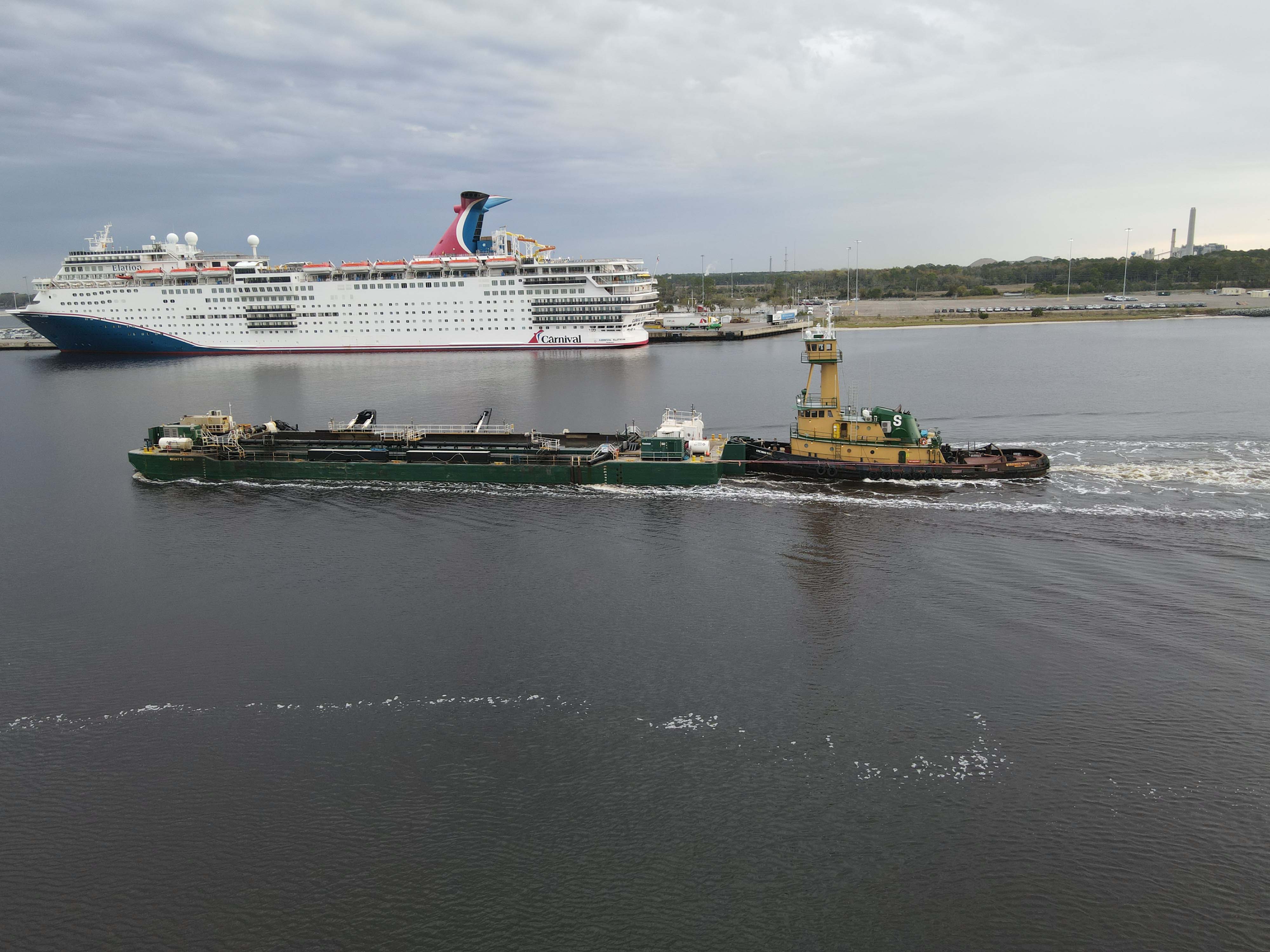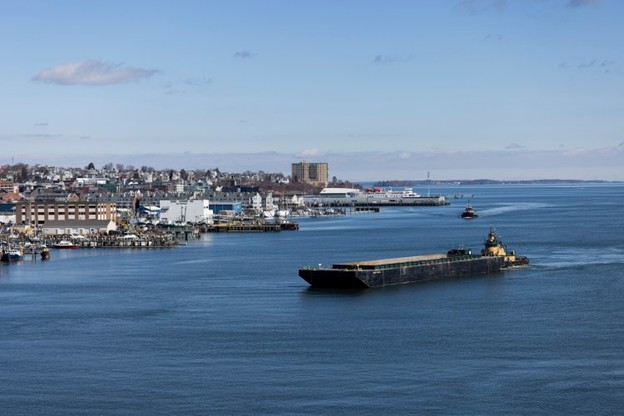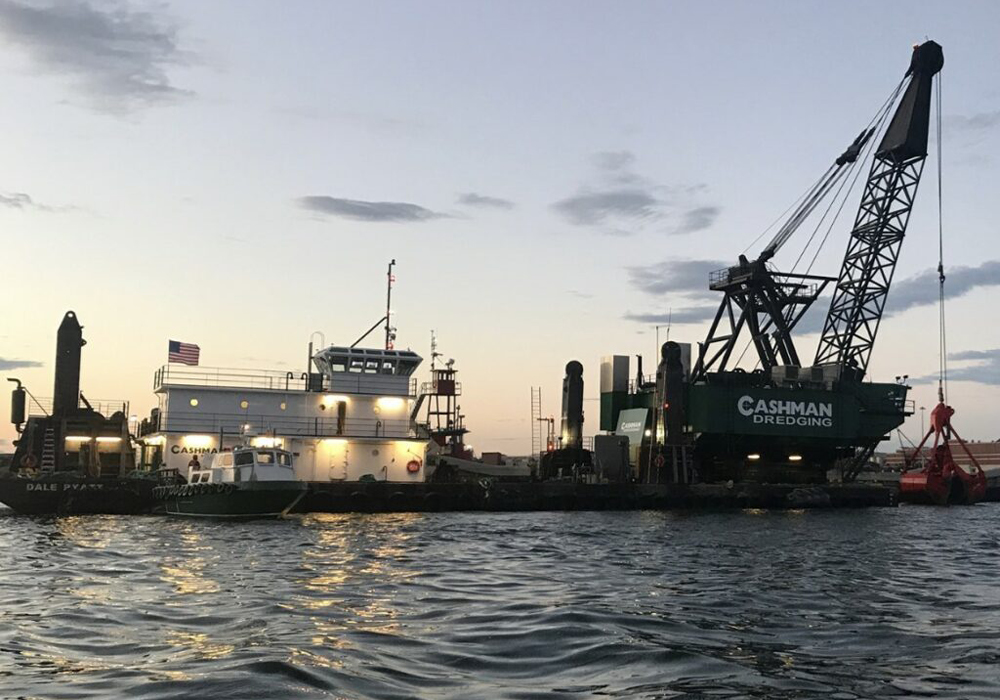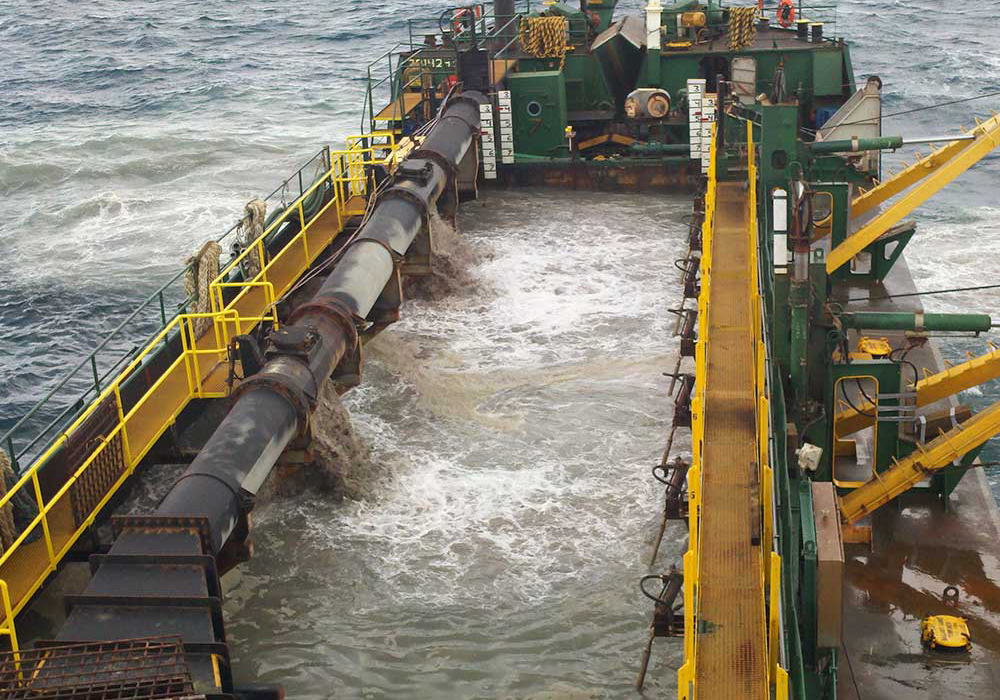EPA cleanup in lower New Bedford Harbor nearly done
June 20, 2018 | Jennette Barnes | WebsiteNEW BEDFORD — Superfund dredging in New Bedford Harbor south of Coggeshall Street is now more than 99 percent complete beneath the low tide line, according to David Lederer, head of the site for the U.S. Environmental Protection Agency.
The harbor sediment is “the cleanest it has been in many decades,” Lederer said in an interview this week as EPA employees were preparing to give a public update Thursday, at 6 p.m. at Fairhaven Town Hall.
The EPA’s Superfund program is working to remove cancer-causing polychlorinated biphenyls, or PCBs, from the harbor and the lower Acushnet River. Full-scale dredging began in 2004.
Cashman, the dredging contractor, finished the lower harbor earlier this month, with the exception of a half-acre area at Moby Dick Marina that could not be done right away because dredging would destabilize a bulkhead that needs repair, Lederer said. He said the owner is cooperating with the EPA.
The EPA refers to everything between Coggeshall Street and the hurricane barrier as the “lower harbor,” and the area to the north as the “upper harbor.”
Above low tide, work continues in the salt marsh at the end of North Street in Fairhaven. Backfilling and replanting should be finished around July 4, Lederer said.
In the upper harbor, work is 97 percent complete in a large area known as the “cable crossing,” just north of Riverbank Lofts, which was the last major area that remained untouched by at least a partial cleanup. PCB levels at the cable crossing have dropped from an average of 545 parts per million to fewer than 10.
The upper harbor is roughly one-third finished below the low tide line, and its PCB levels have dropped by half.
Alexandra Dunn, New England regional administrator of the EPA, said the agency is proud of the progress it has made.
The EPA set a cleanup standard of 50 parts per million of PCBs for the lower harbor and salt marshes, and 10 parts per million for the upper harbor. Some observers have complained that the 50 leaves the harbor much more contaminated than other aquatic Superfund sites.
An EPA fact sheet indicates that the agency chose the level of 50 for a number of reasons: to balance the protection of human health with the protection of sensitive ecosystems, such as saltmarsh habitat; the large area of the site, which is more than 1,000 acres; and because portions of the lower harbor are in the commercial port of New Bedford.
Lederer said the EPA made that decision with the knowledge that the state and city would do additional dredging in the harbor. And PCB levels are actually much lower than the 50, averaging 10.5 in some of the more contaminated areas.
“The 50 was never the end point for the dredging. It was the end point for the Superfund dredging,” he said.
Mark Rasmussen, president of the Buzzards Bay Coalition, said he is of two minds: Local EPA employees should be proud and excited about the sheer volume of PCBs they have removed, benefiting human health and the environment, but the standards of 50 and 10 are still unacceptable, considering that the typical U.S. cleanup reaches a level of 1.
“New Bedford is still getting the worst PCB cleanup in the country,” he said.
Among places in the upper harbor scheduled for more work are the area surrounding the Aerovox site, which is a source of PCBs, and a highly contaminated inlet on the Acushnet side of the river. Work in the inlet will start later this year, Lederer said.
Because toxic material from Aerovox continues to seep into the river, the EPA will not dredge that area of the river right away. A crew will place a sediment cap on it until the state removes the source of the contamination. Then, the EPA will go back and dredge.
Between the EPA’s work and additional dredging done under the authority of the state and city, work crews have removed about 1.27 million cubic yards of material since 2004.
Some of the material is going to a Michigan landfill, and some — with average PCB levels of 100 or less — is being buried in the harbor under a cap of clean fill.




